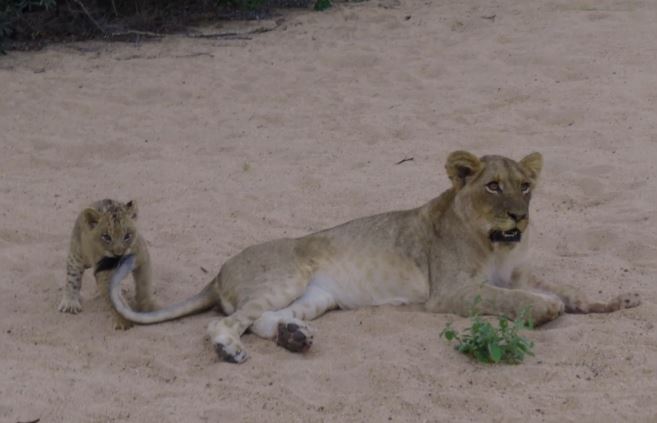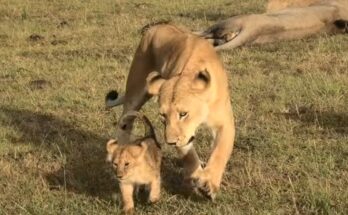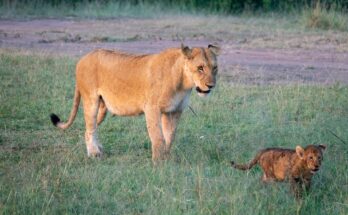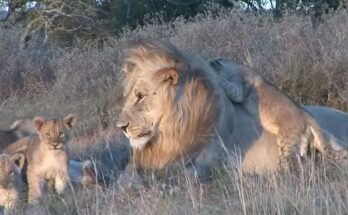
In the soft light of dawn, as the bushveld slowly stirred awake, we came upon a lion pride nestled in a clearing. The air was still cool, the golden grasses damp with dew, and the only sounds were the gentle coos of doves and the distant cough of a hornbill.
Amid the pride’s sleepy sprawl, two tiny lion cubs were wide awake — and full of mischief.
One was barely larger than a house cat, its fur fluffy and eyes bright with boundless curiosity. It pounced ungracefully on its sibling, who tumbled backward in mock defeat, then retaliated with a clumsy swipe of its paw. The pair rolled over each other in the dust, biting softly, ears flattened, tails flicking with joy.
Their mother, stretched out nearby, lifted her head briefly to check on them, then rested it back on her paws, content. Around them, the rest of the pride dozed, bellies full from the night’s hunt — but the cubs knew only the thrill of the game.
They chased each other through the dry grass, tripping over invisible obstacles, then darted back into the safety of the pride’s paws and tails, only to leap out again with squeaky roars of pretend menace.
Watching them was like witnessing the future of the savannah in its purest, most playful form — innocence still untouched by the hard lessons of lion life. There was no blood, no hierarchy, no survival today — only dusty tumbles, soft growls, and sibling rivalry born of joy, not hunger.
As the sun rose higher, painting the land in light, the cubs finally collapsed beside each other, panting and content, their small bodies pressed together in a warm, dusty heap.
A fleeting moment of wild youth — and a memory we would never forget.


